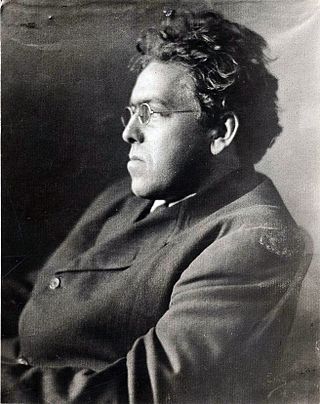
Newell Convers Wyeth, known as N. C. Wyeth, was an American painter and illustrator. He was the pupil of Howard Pyle and became one of America's most well-known illustrators. Wyeth created more than 3,000 paintings and illustrated 112 books — 25 of them for Scribner's, the Scribner Classics, which is the body of work for which he is best known. The first of these, Treasure Island, was one of his masterpieces and the proceeds paid for his studio. Wyeth was a realist painter at a time when the camera and photography began to compete with his craft. Sometimes seen as melodramatic, his illustrations were designed to be understood quickly. Wyeth, who was both a painter and an illustrator, understood the difference, and said in 1908, "Painting and illustration cannot be mixed—one cannot merge from one into the other."

Howard Pyle was an American illustrator, painter, and author, primarily of books for young people. He was a native of Wilmington, Delaware, and he spent the last year of his life in Florence, Italy.
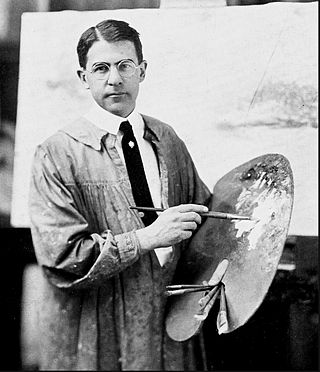
Frank Earle Schoonover was an American illustrator who worked in Wilmington, Delaware. A member of the Brandywine School, he was a contributing illustrator to magazines and did more than 5,000 paintings.
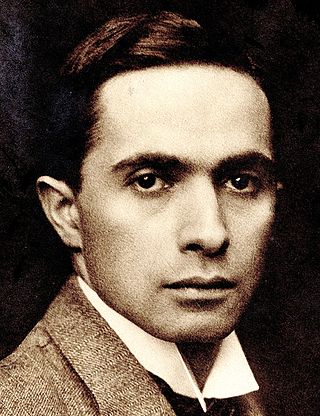
Joseph Christian Leyendecker was one of the most prominent and financially successful freelance commercial artists in the U.S. He was active between 1895 and 1951 producing drawings and paintings for hundreds of posters, books, advertisements, and magazine covers and stories. He is best known for his 80 covers for Collier's Weekly, 322 covers for The Saturday Evening Post, and advertising illustrations for B. Kuppenheimer men's clothing and Arrow brand shirts and detachable collars. He was one of the few known homosexual artists working in the early-twentieth century U.S.

Harvey Thomas Dunn NA, also known as J. Harvey Dunn, was an American painter and teacher. During World War I, Dunn was an artist-correspondent with the American Expeditionary Forces in Europe. Most of Dunn's war sketches are housed at the Smithsonian Institution in the National Museum of American History in Washington, D.C. He is best known for his prairie-intimate masterpiece, The Prairie is My Garden (1950). In this painting, a mother and her two children are out gathering flowers from the quintessential prairie of the Great Plains.

The Delaware Art Museum is an art museum located on the Kentmere Parkway in Wilmington, Delaware, which holds a collection of more than 12,000 objects. The museum was founded in 1912 as the Wilmington Society of the Fine Arts in honor of the artist Howard Pyle. The collection focuses on American art and illustration from the 19th to the 21st century, and on the English Pre-Raphaelite Brotherhood movement of the mid-19th century.

Jessie Willcox Smith was an American illustrator during the Golden Age of American illustration. She was considered "one of the greatest pure illustrators". A contributor to books and magazines during the late 19th and early 20th centuries, Smith illustrated stories and articles for clients such as Century, Collier's, Leslie's Weekly, Harper's, McClure's, Scribners, and the Ladies' Home Journal. She had an ongoing relationship with Good Housekeeping, which included a long-running Mother Goose series of illustrations and also the creation of all of the Good Housekeeping covers from December 1917 to 1933. Among the more than 60 books that Smith illustrated were Louisa May Alcott's Little Women and An Old-Fashioned Girl, Henry Wadsworth Longfellow's Evangeline, and Robert Louis Stevenson's A Child's Garden of Verses.

Elizabeth Shippen Green was an American illustrator. She illustrated children's books and worked for publications such as The Ladies' Home Journal, The Saturday Evening Post and Harper's Magazine.

The Brandywine School was a style of illustration—as well as an artists colony in Wilmington, Delaware and in Chadds Ford, Pennsylvania, near the Brandywine River—both founded by artist Howard Pyle (1853–1911) at the end of the 19th century. The works produced there were widely published in adventure novels, magazines, and romances in the early 20th century. Pyle’s teachings would influence such notable illustrators as N.C. Wyeth, Maxfield Parrish, and Norman Rockwell. Pyle himself would come to be known as the "Father of American Illustration." Many works related to the Brandywine School may be seen at the Brandywine River Museum of Art, in Chadds Ford.
Clara Elsene Peck was an American illustrator and painter known for her illustrations of women and children in the early 20th century. Peck received her arts education from the Minneapolis School of Fine Arts and was employed as a magazine illustrator from 1906 to 1940. Peck's body of work encompasses a wide range, from popular women's magazines and children's books, works of fiction, commercial art for products like Ivory soap, and comic books and watercolor painting later in her career. Peck worked during the "Golden Age of American Illustration" (1880s–1930s) contemporaneous with noted female illustrators Jessie Willcox Smith, Elizabeth Shippen Green and Violet Oakley.

Wilhelm Heinrich Detlev "Big Bill" Körner, also known as Wilhelm Heinrich Dethlef Koerner, William HD Koerner, WHDK, or W.H.D. Koerner, was a noted illustrator of the American West whose works became known to new audiences when his painting, nicknamed A Charge to Keep, was used as the cover image for the ghostwritten biography by the same name by George W. Bush. This painting, which hung in the Oval Office during the Bush presidency was of special interest to journalists due to the interpretation given by Bush of the painting's meaning in light of the meaning and title attached to the painting by the artist.

Ellen Bernard Thompson Pyle was an American illustrator best known for the 40 covers she created for The Saturday Evening Post in the 1920s and 1930s under the guidance of Post editor-in-chief, George Horace Lorimer. She studied with Howard Pyle and later married Pyle's brother Walter.

Floyd MacMillan Davis was an American painter and illustrator known for his work in advertising and illustration; Walter and Roger Reed described him as "someone who could capture the rich, beautiful people of the 1920s: dashing, mustachioed men; the cool, svelte women. But Davis was just as capable at capturing just-plain-folk, and with a cartoonist's sensibilities and a fresh humor, he expanded into story art and ad work that called characters of every persuasion.

Harold Mathews Brett (1880–1955) was an American illustrator and painter best known for his New England scenes and portraits. His style is that of realism and genre works. His illustrations have been featured in Harper's Weekly, Collier's Weekly, and The Saturday Evening Post. Brett's paintings hang in the Brandywine River Museum, Cape Cod Museum of Fine Art, and the Chatham Historical Society, among others.
Gayle Porter Hoskins was an American illustrator. Hoskins began his training at the Chicago Art Institute and later studied under Howard Pyle in Wilmington, Delaware.
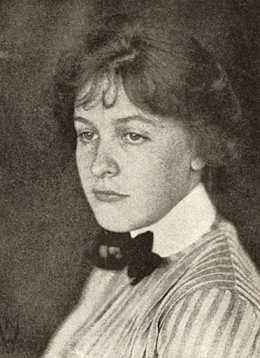
Sarah Stilwell Weber was an American illustrator who studied at Drexel Institute under Howard Pyle. She illustrated books and national magazines, like The Saturday Evening Post, Vogue, and The Century Magazine.
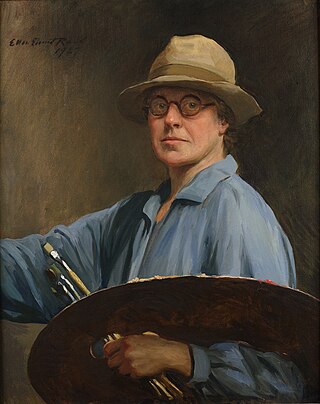
Ellen Emmet Rand was a painter and illustrator. She specialized in portraits, painting over 500 works during her career including portraits of President Franklin D. Roosevelt, artist Augustus Saint-Gaudens, and her cousins Henry James and William James. Rand studied at the Cowles Art School in Boston and the Art Students League in New York City and produced illustrations for Vogue Magazine and Harper's Weekly before traveling to England and then France to study with sculptor Frederick William MacMonnies. The William Benton Museum of Art at the University of Connecticut owns the largest collection of her painted works and the University of Connecticut, as well as the Archives of American Art within the Smithsonian Institution both have collections of her papers, photographs, and drawings.
E. Roscoe Shrader was an American painter and art instructor known for his colorful, post-impressionistic landscapes, figures, and still lifes. He was head of faculty at the Otis Art Institute from 1919 to 1949, and was the president of the California Art Club (CAC) from 1924 to 1930, and again in 1934. He formed the Group of Eight, which included painters such as Mabel Alvarez, at his studio in Hollywood, California.

John La Gatta, also spelled LaGatta, was an advertising illustrator active during the first half of the 20th century.
Sarah Katherine Smith (1878–1956+) was an artist and educator known for her illustrations, etchings, prints, and paintings. For 25 years, she was the head of the art department at the Gulf Park College for Women in Long Beach, Mississippi.
















